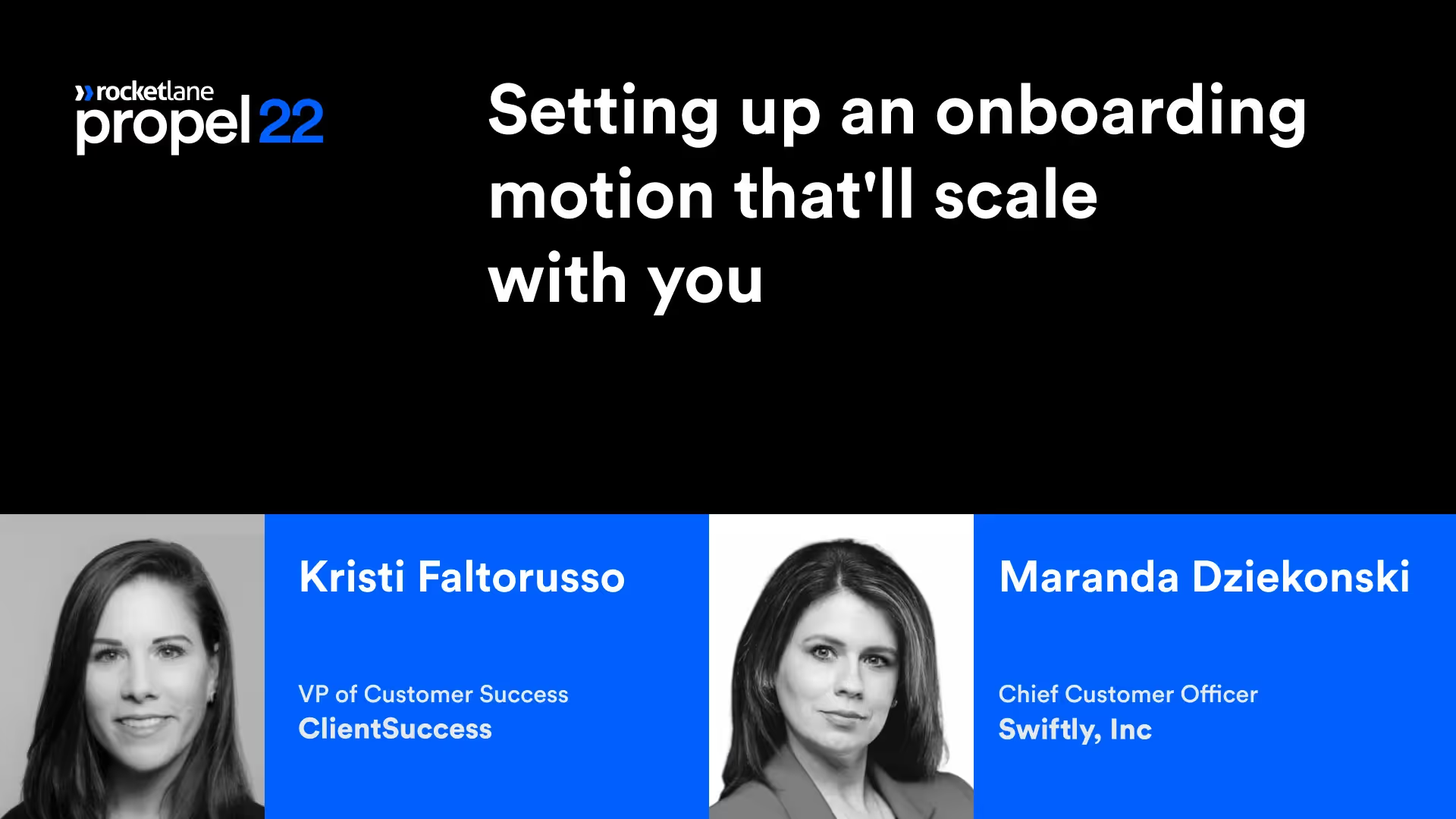In this session of Propel 22, Maranda Dziekonski, Chief Customer Officer at Swiftly, and Kristi Faltorusso, VP, Customer Success at ClientSuccess, shared their learnings and insights on setting up an onboarding motion that grows with the organization.
They discussed:
- A common mistake in the way companies perceive onboarding
- The different types of onboarding motions
- Change management challenges and approaches
- Successful onboarding: indicators and metrics
- CS or onboarding: which comes first?
Here are the takeaways from the session.
1. The three different types of onboarding motions
- High-touch: Typically, for customers who need a lot of change management (or in cases where change management isn’t happening as expected).
- Digital touch: For long tail-low ARR accounts
- Hybrid (digital-led): High-touch where needed and digital in areas that need minimal change management
2. A common mistake that companies make in their approach to onboarding
Most companies think of onboarding as being limited to a specified period, whereas it needs to be looked at as an ongoing education and engagement activity, to support customers with their needs at the right time.
It helps to look at onboarding as a layer on top of customer experience. Companies should invest in the creation of resources and collateral that customers can access throughout their lifecycle through webinars, videos, enhancement of existing content, etc.
3. Helping customers define their goals for onboarding
Kristi relies on an approach that outlines the seven core objectives that the product can help customers achieve. The product’s capabilities are mapped to these objectives. Customers are then encouraged to pick their top three. This helps companies focus their onboarding efforts and understand exactly how they can realize value.
The ultimate goal, throughout the customer’s lifetime with the product, is to help them achieve all seven goals.
4. Change management: challenges and approaches
Change management is a challenge in the case of products that require daily interactions, such as a CRM or BI tool. Since these products are often to be adopted by multiple departments, change management during onboarding needs to focus on answering the WIIFM (What’s in it for me?) question for end-users.
Kristi recommends having a partnership kickoff, right after sale and before the project kickoff, that focuses heavily on change management. As part of this, discussions should revolve around the customer owning change management, and working on an internal plan that focused on making a case for a new product, communication, building alignment across different teams, etc.
Maranda recommends an onboarding reboot for teams that have failed to see product adoption. Onboarding teams should not be afraid to re-onboard to drive adoption or handle internal changes at the customer end. Even in the case of product-led growth where onboarding is built into the product, change management should be an active focus if adoption is low.
5. Successful onboarding: indicators and metrics
Here are the key metrics Maranda and Kristie recommend:
- Time to first value
- Post-implementation survey (questions focused on how enabled and empowered users feel to independently use the product)
- Usage and module adoption (3-6-9 months after onboarding)
- Tickets and type of tickets raised after onboarding
- Participation in post-onboarding meetings
Kristie also organizes a graduation ceremony at the end of onboarding (for each customer) that’s focused on celebrating what was achieved, and outlining the goals and frameworks for the next three to six months.
6. Measuring ROI for customers
At Swiftly, customers' quantitative and qualitative goals are captured and tracked in their CX tools and used for regular project check-ins.
At ClientSuccess, Kristi uses a goals tracker that is considered indicative of the customer’s health score. They help customers identify the core objectives that they can achieve with their product, with inputs from other customer journeys.
7. CS on onboarding: Which comes first for startups?
CS needs to come first. Start with a generalist approach, but as the function grows and things start breaking, companies need to peel layers off and separate them, such as the onboarding layer.
Companies need to understand what the CS team is spending time on, and identify the different layers to separate.















